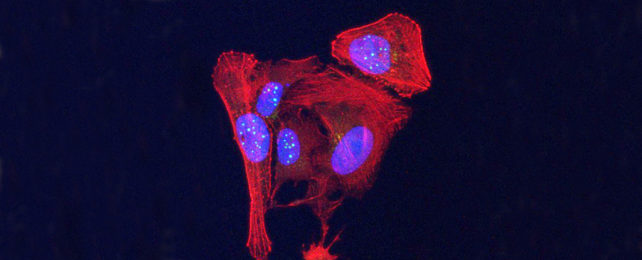We've known about telomeres for more than 80 years, but these tiny, protective structures at the end of the chromosomes keep revealing secrets to us, including the possibility of having surprising functions.
It turns out that these key biological cogs can produce proteins, something previously thought impossible due to their simplicity.
While it's not clear yet what these proteins might do, the fact that they exist at all is significant.
Telomeres carry our genetic information and play a crucial role in our bodies. As we age, telomeres lose their protective qualities, leading to cell death and damage. That structures so vital are operating in a way that we didn't previously know about means there are all kinds of potential possibilities.
The discovery was brought about through the identification of a molecule of RNA linked to amyotrophic lateral sclerosis (ALS). RNA helps to produce the proteins that drive the body's functions, and here researchers noted that this ALS-related RNA molecule was very similar to the one produced by telomeres.
That got researchers of the new thinking: Could the same protein-producing mechanism be at play in the telomeres RNA molecule and the RNA molecule linked to ALS?
After further investigation, their conclusion was "Yes."
"Occasionally, scientists have failed to put observations from two very distant fields together, and that's what we did," says molecular biologist Jack Griffith from the University of North Carolina at Chapel Hill.
"Discovering that telomeres encode two novel signaling proteins will change our understanding of cancer, aging, and how cells communicate with other cells."
Through an experimental setup, the team showed that telomere DNA could instruct cells to produce two signaling proteins, VR (valine-arginine) and GL (glycine-leucine). These proteins could then pass on messages for biological functions that impact the body's wellbeing.
Further analysis revealed that VR is found in higher levels in some human cancer cells and in the cells of people with diseases related to defective telomeres, such as inflammatory bowel disease.
It indicates the effects these proteins might have, and experts could also use them to assess cell health.
"We think it's possible that as we age, the amount of VR and GL in our blood will steadily rise, potentially providing a new biomarker for biological age as contrasted to chronological age," says molecular biologist and the study's lead author Taghreed Al-Turki, also from UNC at Chapel Hill.
"We think inflammation may also trigger the production of these proteins."
Further studies are required to understand how these proteins might play out in terms of cell metabolism and possible inflammation responses. Still, it's a fascinating new field of research to explore.
"Many questions remain to be answered, but our biggest priority now is developing a simple blood test for these proteins," says Griffith. "This could inform us of our biological age and also provide warnings of issues, such as cancer or inflammation."
The research has been published in PNAS.
